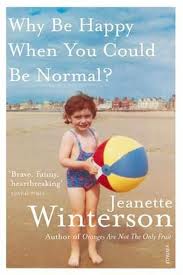Memoir Writing: Two Very Different Approaches
Biff Barnes
Searching the memoir section of your local bookstore (if your are fortunate enough to still have one) or the pages of Amazon, it seems as if there is a consensus among authors that the genre requires the employment of the tools of creative nonfiction.
Meghan Ward in a post on her excellent blog, Writerland titled Five Things I’ve Learned About Memoir Writing captures the essence of that view when she advises, “Your memoir needs a story arc, just like a novel. This is one of the most difficult tasks of the memoir writer because life does not happen like a plot, with an inciting incident, tension that builds to a climax, and a neat resolution. But your story needs to, even if that arc is emotional or psychological.”

An author who applies this notion tries to recreate their life experiences in a way that the reader to experience the events directly. The author removes herself as an intermediary telling a story and becomes a character in a drama unfolding before the reader. The results can be wonderful. He analyzes
But there’s another approach to memoir that we see less often these days. It’s a reflective look at the author’s life. We might see it as a curated experience of events as opposed to a direct one.
Richard Gilbert, another of my favorite bloggers, in a post on his blog, Narrative explored this second approach. He analyzes British novelist Jeanette Winterson’s book Why Be Happy When You Could Be Normal? which he describes as a ”… searing memoir about life with her depressive mother in working-class England [which]breaks the rules that American memoirists live by. By the rules I mean our emphasis on scene … Winterson’s story is heavily expository—she tells this tale, and she reflects upon it, all from some distance. Scenes come in brief flashes or are heavily interlarded with exposition. She gives the perspective of the writer at her desk rather than that of the child who was “shut in a coal hole” or locked out all night on the family’s doorstep.”
The result is considerably different from most of the memoirs we see today. But, says Gilbert, “I’ll say this about this not-very-scenic memoir. I want to read it again. That’s because, I think, it isn’t merely a recitation or recreation of a dysfunctional childhood. It’s no Angela’s Ashes. Rather it is about someone who made something of what was made of her—and that’s always interesting, always news. Winterson doesn’t convey experience as much as she conveys the residue of that experience. Herself. Her mind. Her happiness, or at least her feeling of being lucky, that she has the life she does because she became herself…”
I don’t presume to say that one approach is superior to the other. I have advocated the use of the tools of creative nonfiction often in this blog. But both writers and their life experiences differ. It is unfortunate that contemporary memoirists launch their narrative as if it were a novel without even considering the more reflective approach Winterson represents. Recognizing that there is more than one tool in the toolbox allows the memoirist more choices about the best way to shape the raw material of their life experiences.